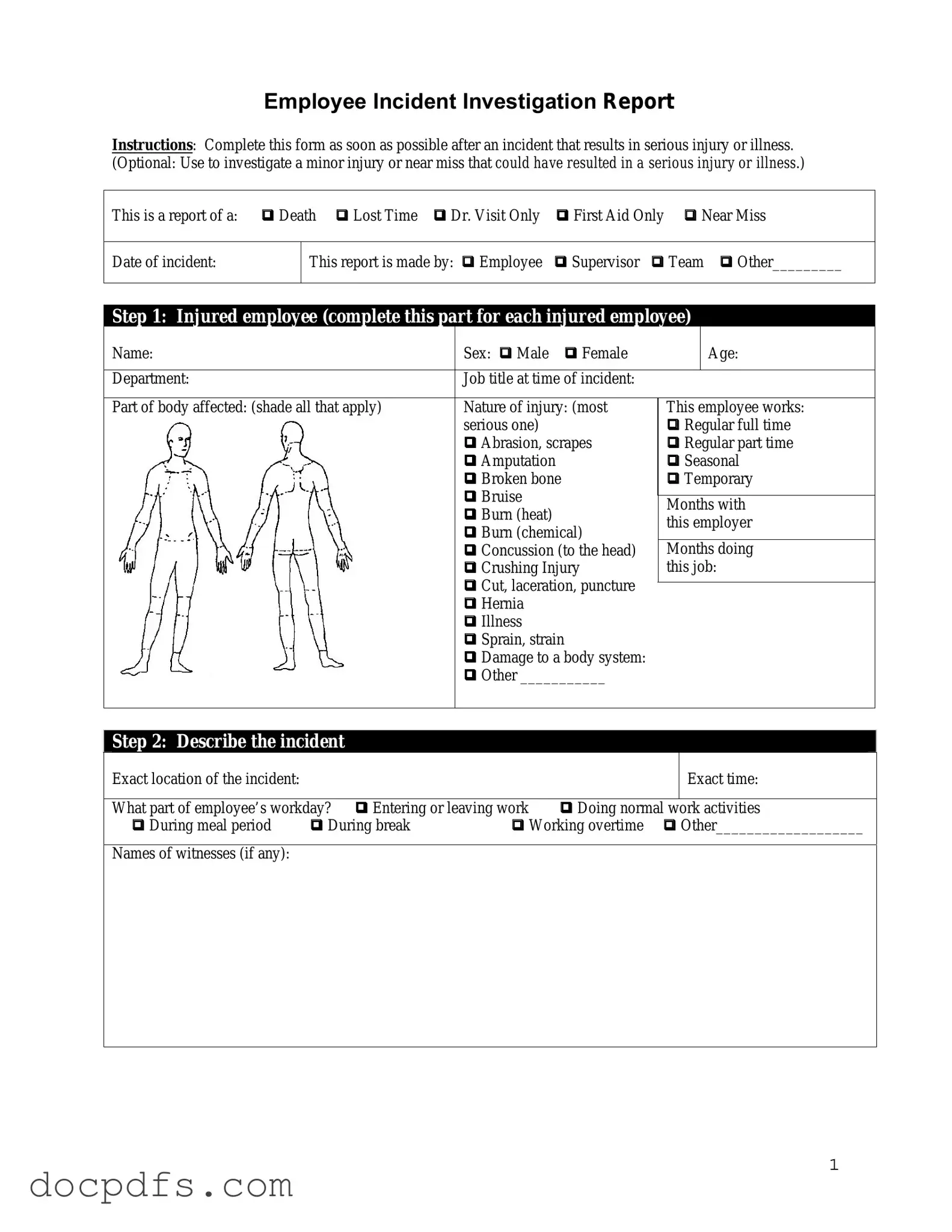The Employee Accident Report form serves to document any incidents that occur in the workplace, where an employee is injured or experiences an accident. This form is crucial for ensuring that all necessary information is collected, which can help in processing claims, improving workplace safety, and complying with legal requirements. By filling out this form, employees contribute to a safer work environment and help the organization address any hazards that may exist.
Any employee who is involved in an accident or injury while on the job should complete the Employee Accident Report form. Additionally, supervisors or managers may also need to assist in filling out the form if they are present at the time of the incident. It is important that the report is completed as soon as possible after the accident to ensure accuracy and thoroughness.
The Employee Accident Report form typically requires the following information:
-
The date and time of the accident.
-
The location where the accident occurred.
-
A detailed description of the accident, including how it happened.
-
The names and contact information of any witnesses.
-
The nature of the injuries sustained.
-
Any immediate actions taken following the accident, such as first aid or medical treatment.
Providing comprehensive details helps ensure that the incident is accurately recorded and addressed.
What should I do if I witness an accident?
If you witness an accident, it is important to act promptly. First, ensure that the injured person receives the necessary medical attention. Then, you should assist in completing the Employee Accident Report form by providing your account of what happened. Your perspective is valuable and can help clarify the circumstances surrounding the incident. Make sure to include your name and contact information on the report, as this may be needed for follow-up questions.
Once the Employee Accident Report form is submitted, it will be reviewed by the appropriate personnel, such as a supervisor or human resources representative. They will investigate the incident further if necessary and determine if any actions need to be taken to improve safety measures. Additionally, the information collected may be used to process any workers' compensation claims or to provide support to the injured employee. Keeping a record of such incidents helps the organization to identify trends and implement preventive measures.
